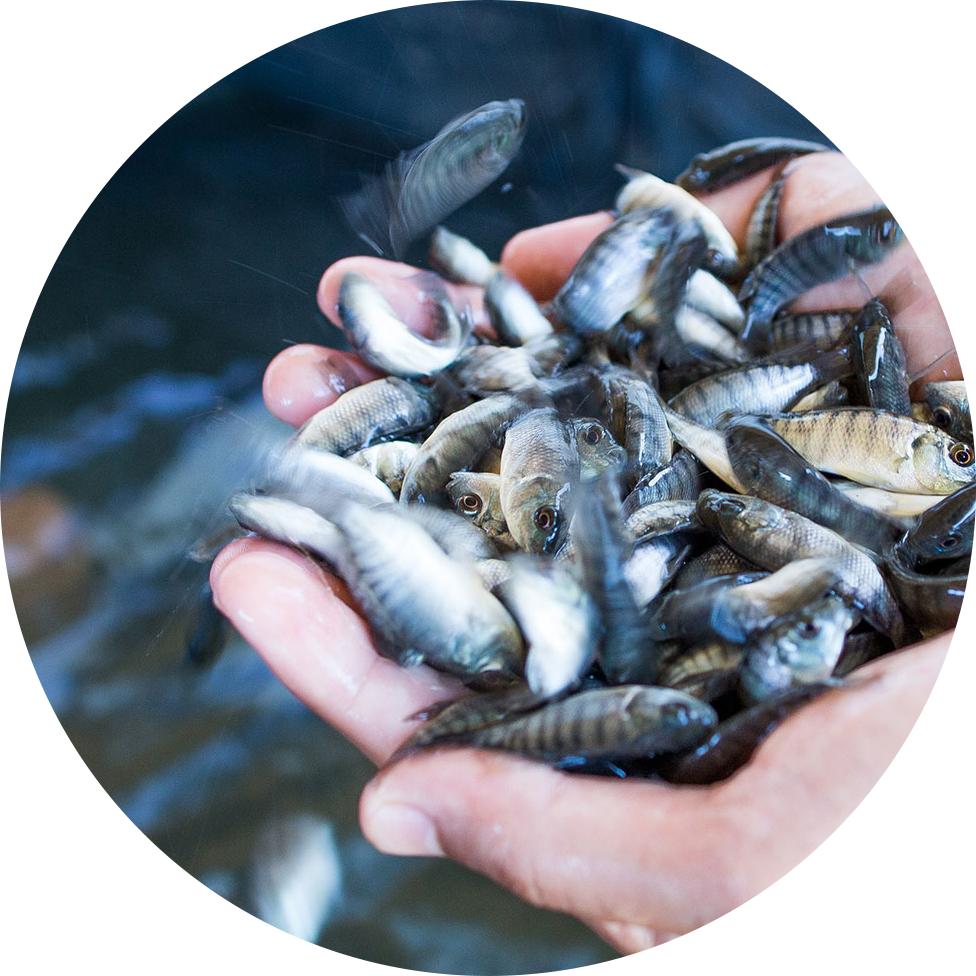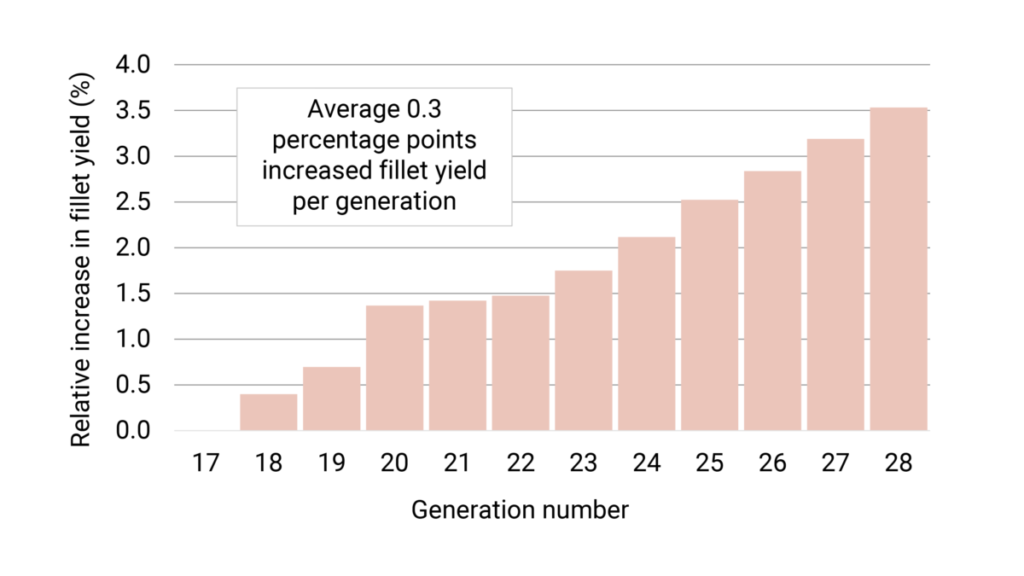
A fast-growing tilapia (Oreochromis niloticus) genetically selected for high yield in farming.
Growth
Benefits of growth
included in GenoMar GAIN
- Increased growth rate accumulated from selection of more than 28 generations
- Reduction in the number of farming days
- Less exposure time to disease and environmental risks
- Improvement in the annual yields per hectare or per production unit as more cycles can be made
- Cost reduction arising from more yields per hectare and per worker, lower mortality and better feed conversion rate (FCR)

Over the last 30 years, genetic selection programs in tilapia have proven to be an important contribution to the development of a cost-effective and sustainable tilapia industry worldwide. Genetic progress on growth have resulted in tilapia breeds that far exceed the performance of their original wild ancestors.
The GenoMar tilapia strain has since the establishment of the founder population originated from Africa and Asia in the late 1980s, been selected for fast growth. Systematically selective breeding for more than 28 generations, using state-of-the-art technologies has led to gradually improvements in growth rate for the strain which is offered to the tilapia farmers today.
Selected for growth in the first generations
During the first 16 generations in the GenoMar breeding program, fast growth was the number one trait and the only selection criteria. The combination of high heritability and strong weighing of traits has generated a solid fundament for the fastest growing tilapia strain in the industry. Other traits like fillet yield, general robustness and specific disease resistance were successively introduced from generation 17 and onward.
Selected for several traits in the recent generations
Development and introduction of new traits in the selection program open for a more balanced selection with more weighing on traits targeting robustness/survivability and productivity. This development has taken place since 2006 and enables for a more differentiated product portfolio, with traits adapted to different farming conditions.
In these recent generations the growth has been weighted around 40-50%, but still generate a significant genetic progress estimated to an average improved growth performance of 7.1 percentage point each generation (Figure 1).

Fillet yield
Benefits of fillet yield
included in GenoMar GAIN
- Cost reduction and more yield for the farming and processing industry
- Larger fraction of the fish eatable gives improved resource utilization

In 2006, genetic selection for fillet yield in tilapia was introduced as the second trait in the breeding programme of the GenoMar strain. Both from a feed conversion perspective as well as for the profitability for the farming and processing industry, it is favourable to maximise the fillet yield. Fast growth will not automatically increase the fillet size, since the fillet proportions of the body varies from fish to fish.
The selection for fillet yield started from generation 17 and has been continued in the generations going forward. In these recent generations the fillet yield has been weighted around 20-50%, resulting in an estimated average increased fillet yield of 0.3 percentage points each generation (Figure 2). Fillet yield is measured after performing a shallow skinning without trimming of the fillet.

Selection for GenoMar GAIN
When producing fingerlings and juveniles to the farmer, the weighing of traits in the final selection of parent stock is based on the predetermined desired genetic profile. The best performing parents matching the profile is then picked for mating.
In GenoMar GAIN we have kept the solid underlying robustness and specific disease resistance improvements and continued the growth and fillet yield performance developed through many generations of systematic selections.
Product specifications
Available sizes delivered from our hatcheries:
Fingerlings: 0.25-2 grams
Juveniles: 20-40 grams
Time of delivery:
Fingerlings are supplied year-round.
Available markets:
Also have a look at the GenoMar STRONG product
Read more about the performance of GenoMar GAIN in this popular science article: Evidence of selection response and increased profitability of a new generation of commercial tilapia fingerlings, Aqua Culture Asia Pacific, March/April 2023
